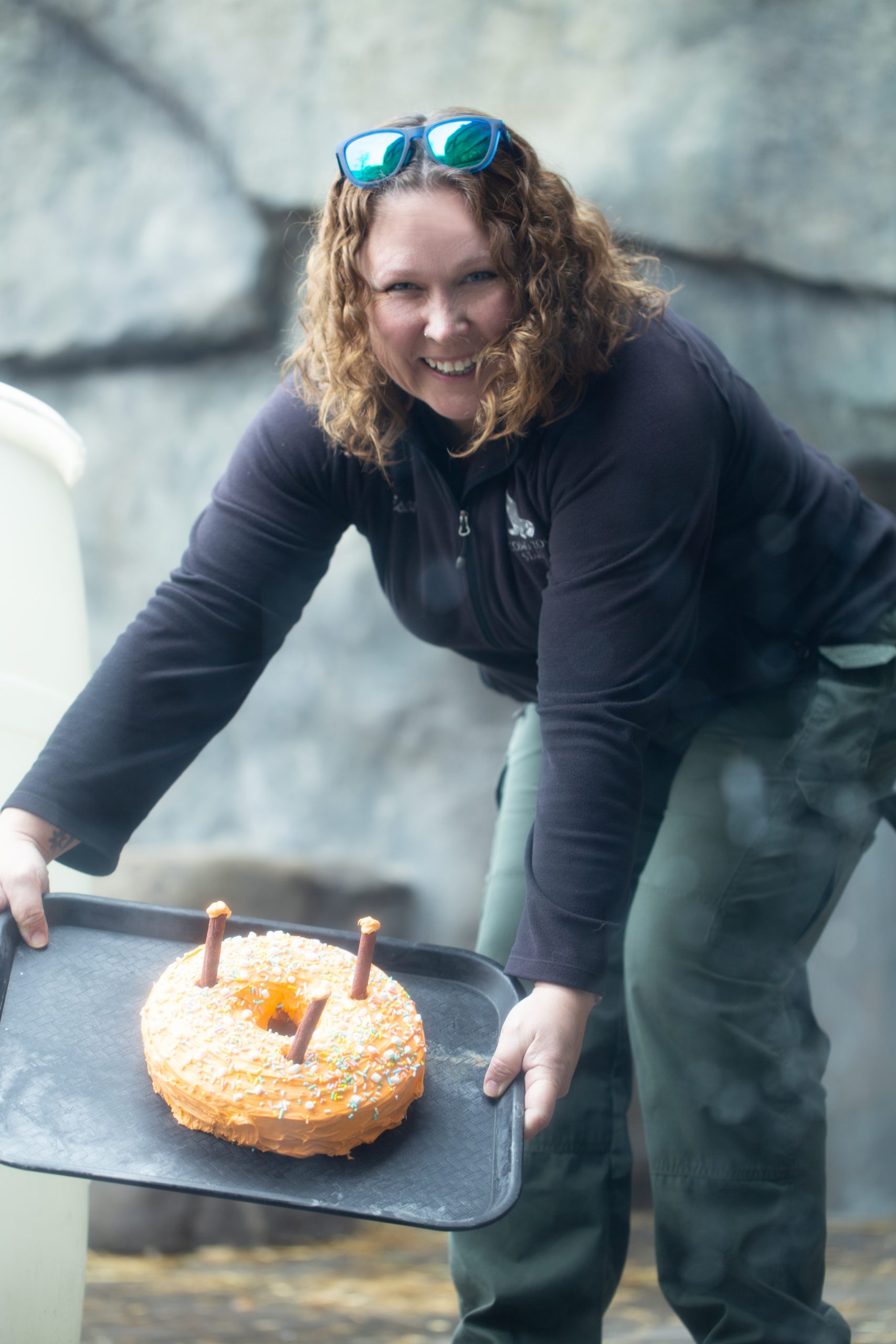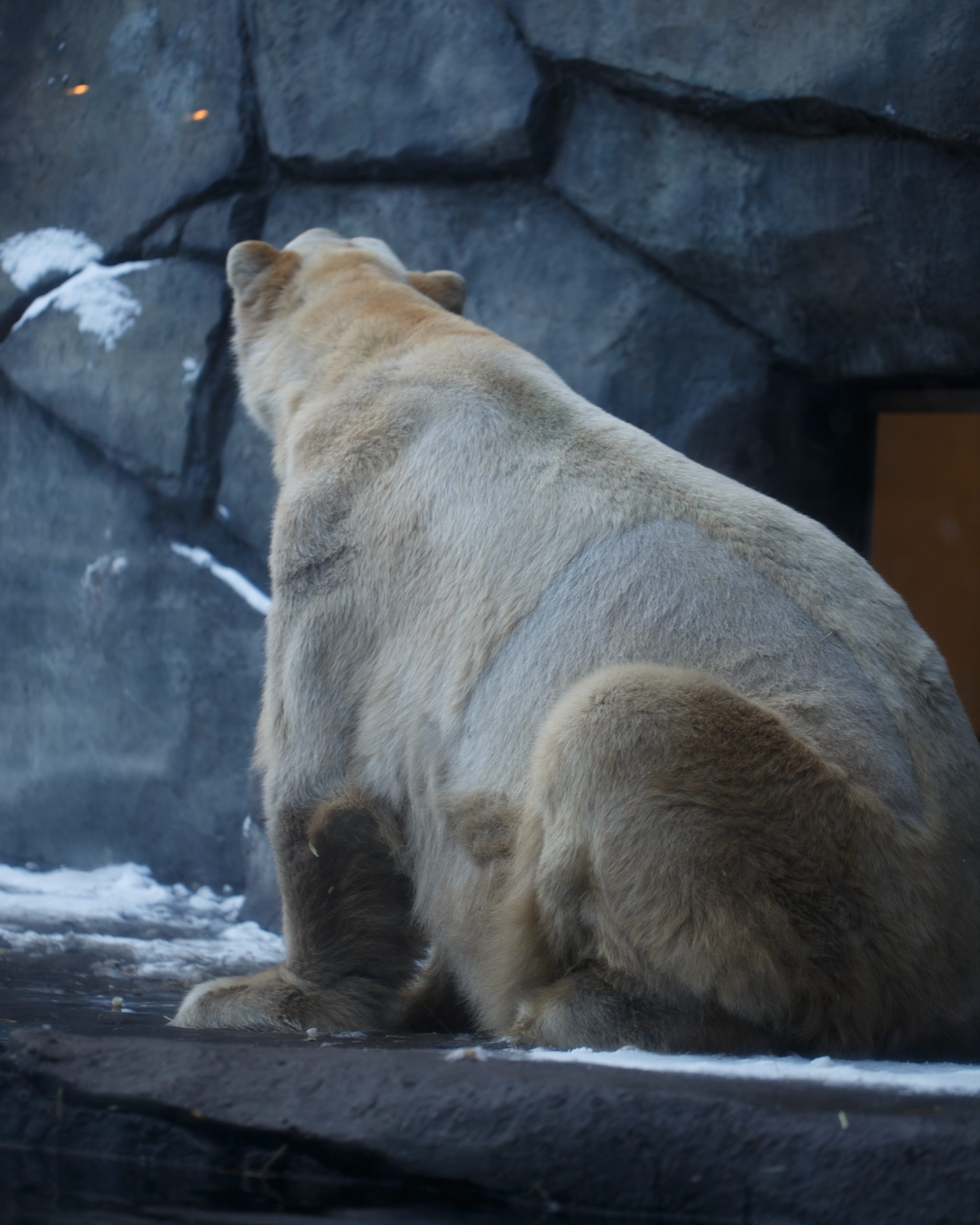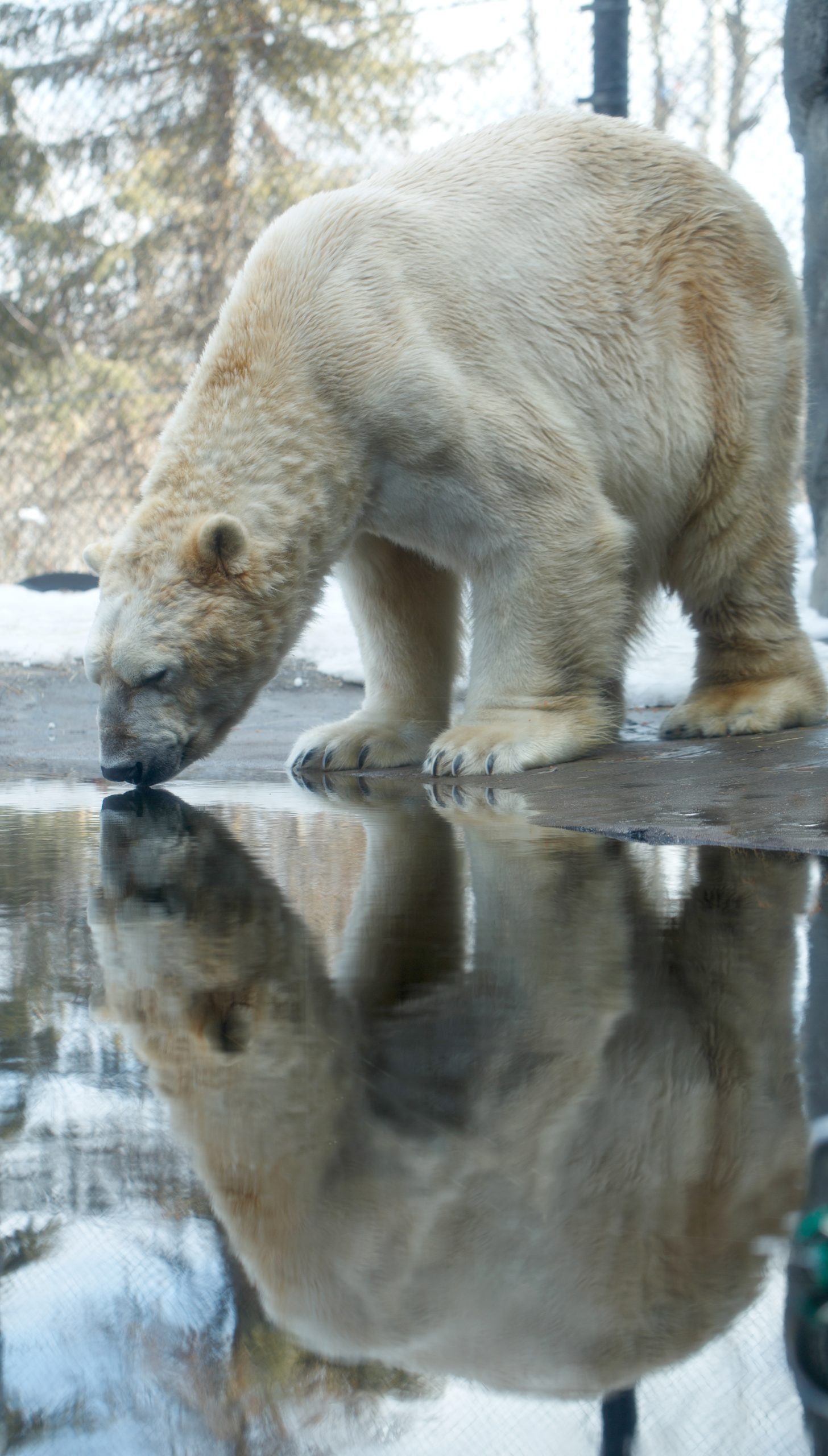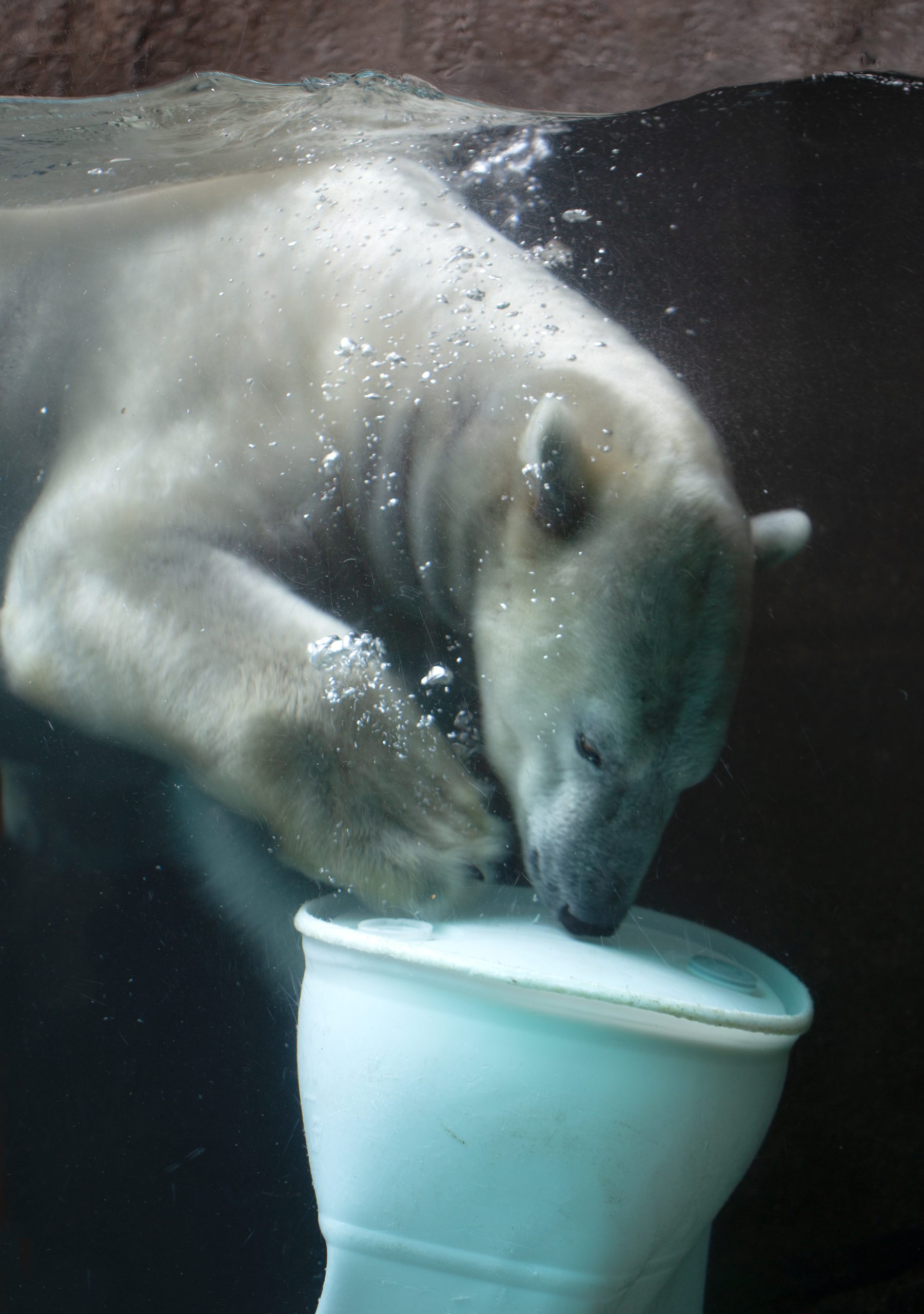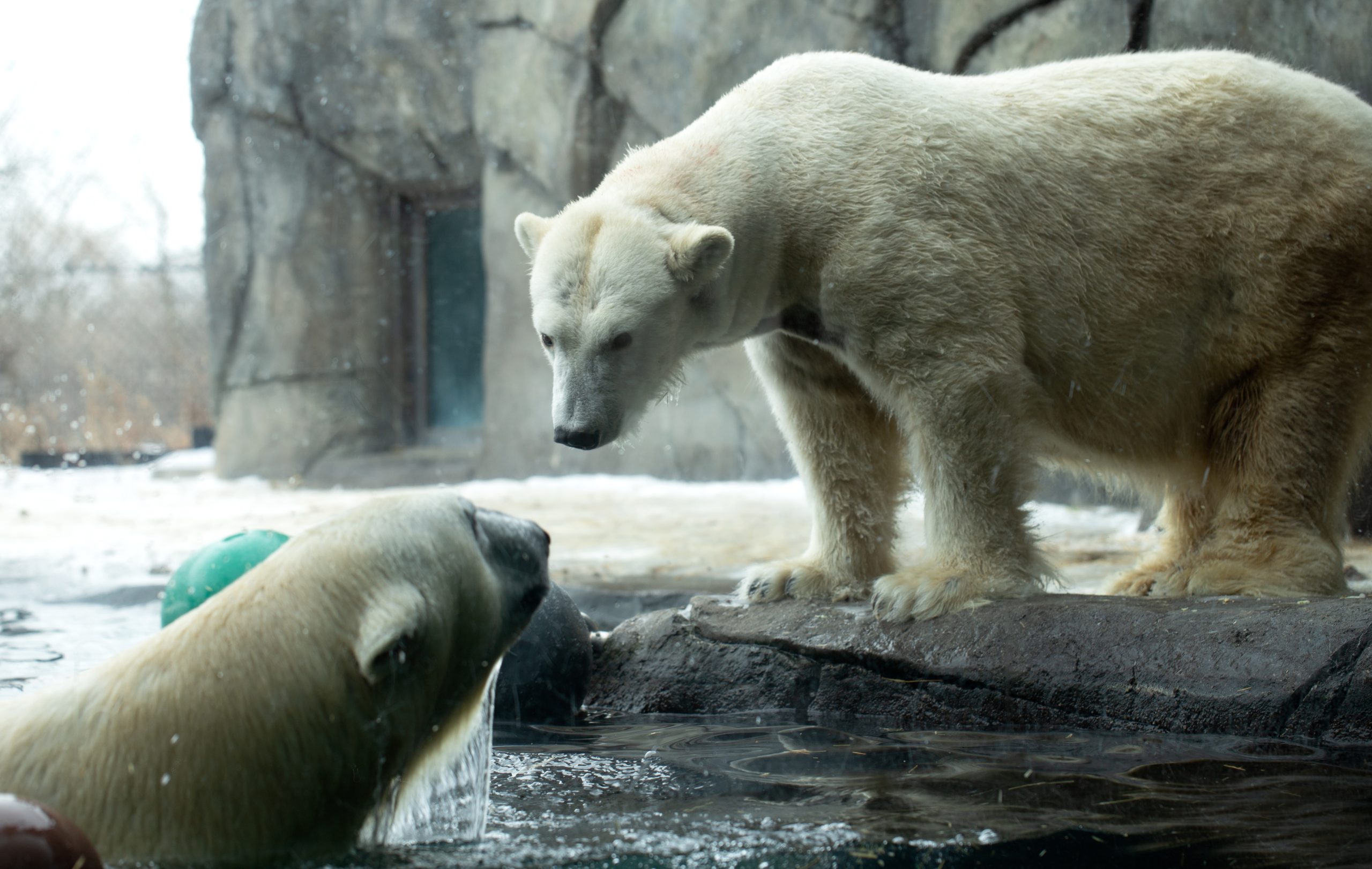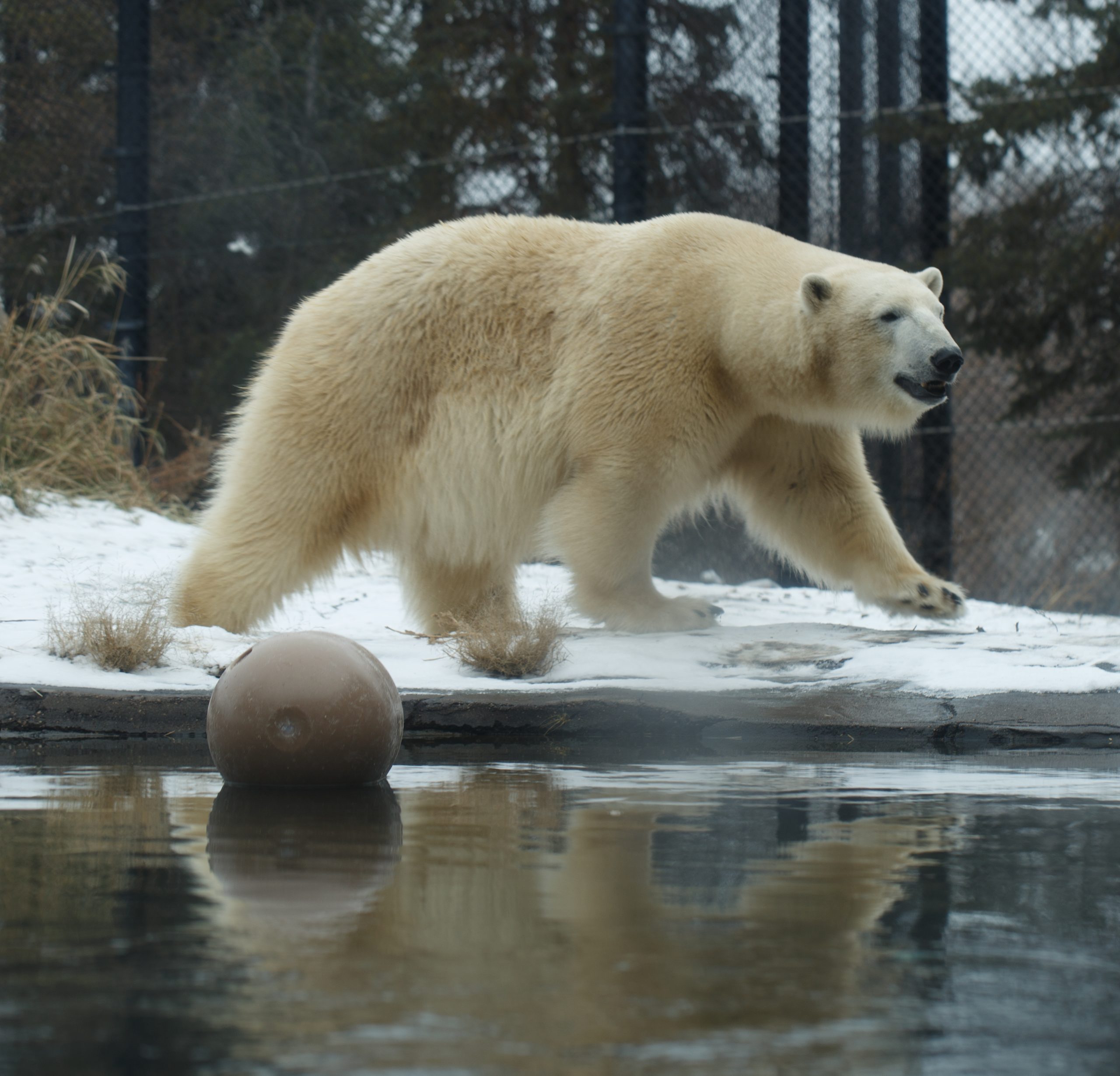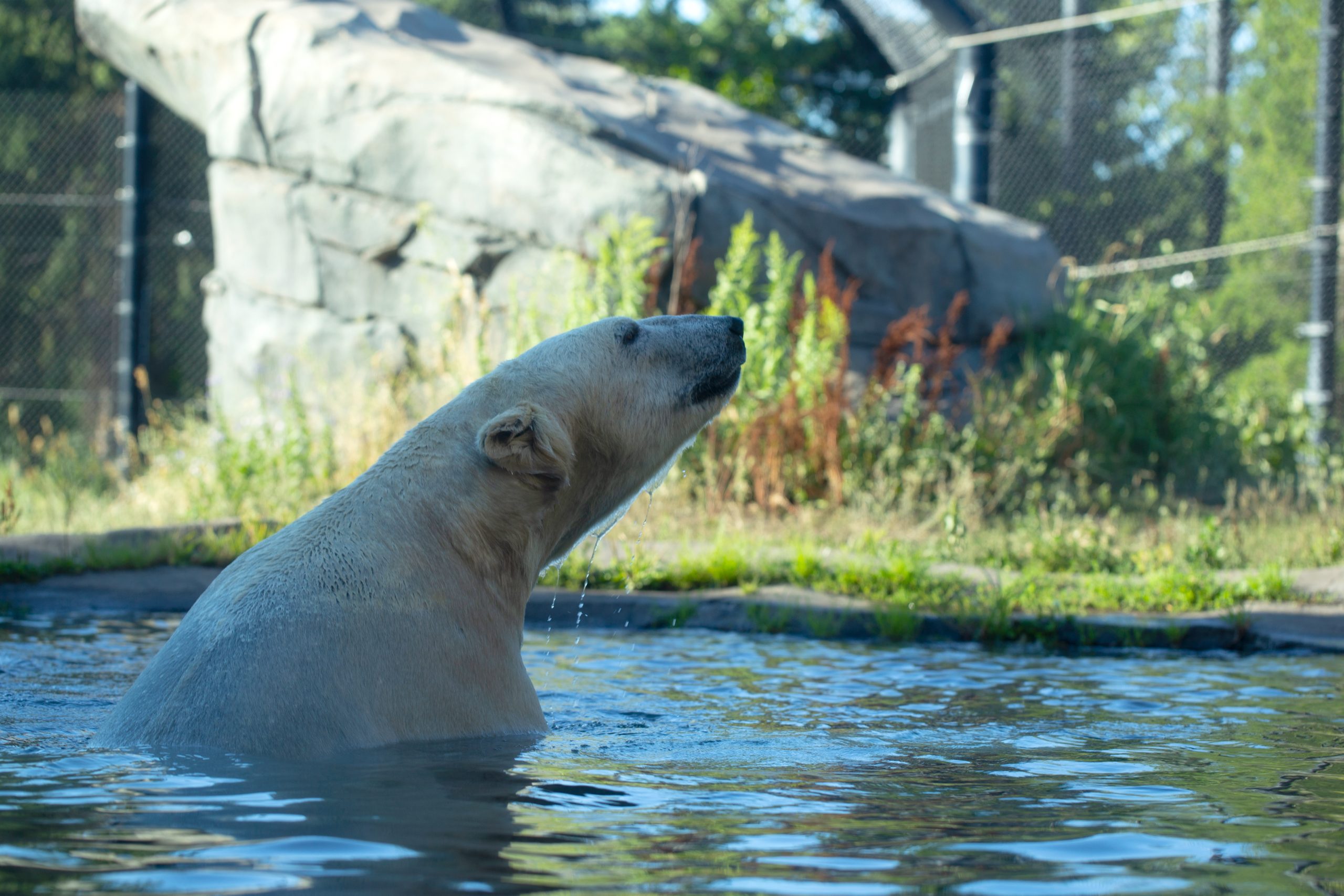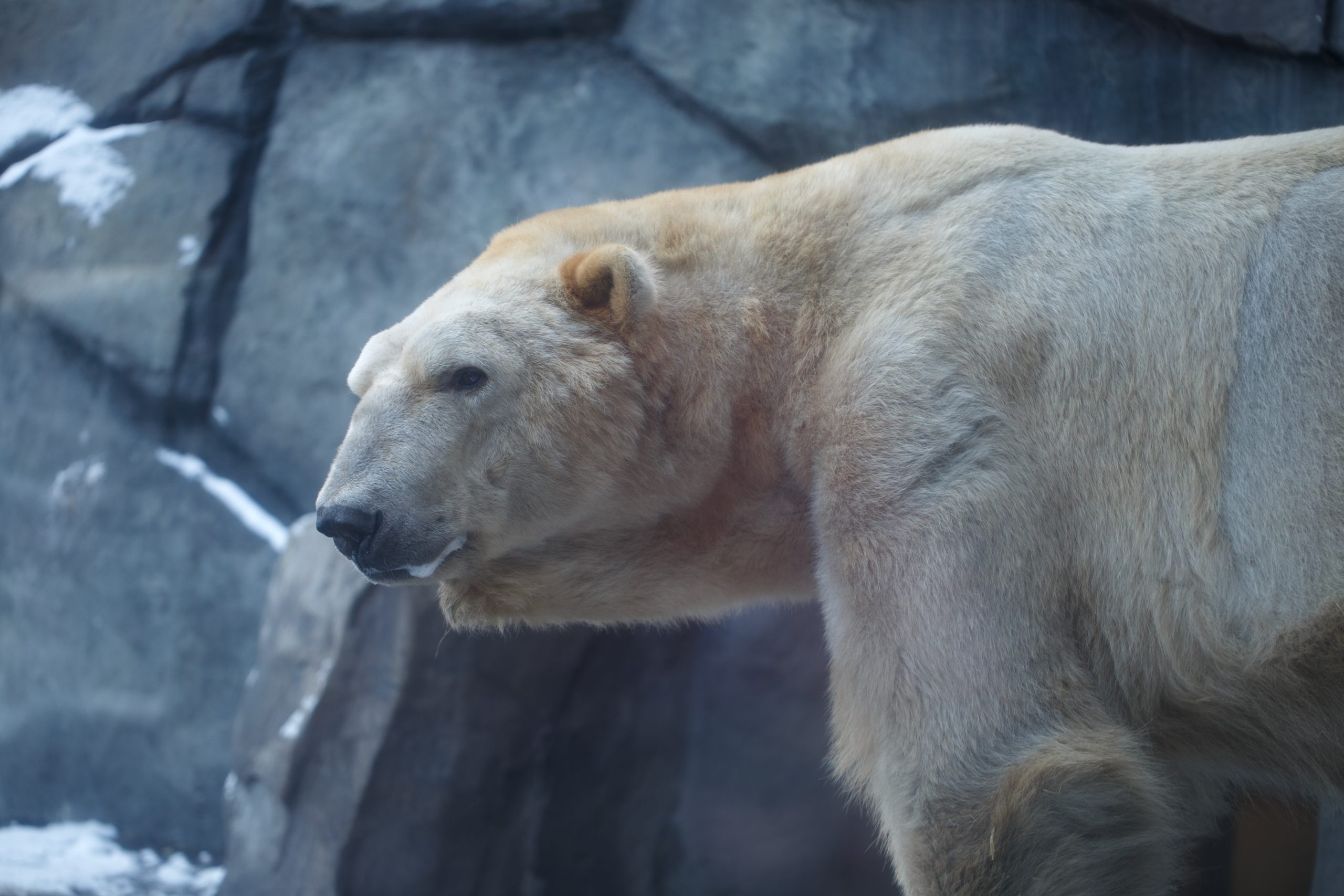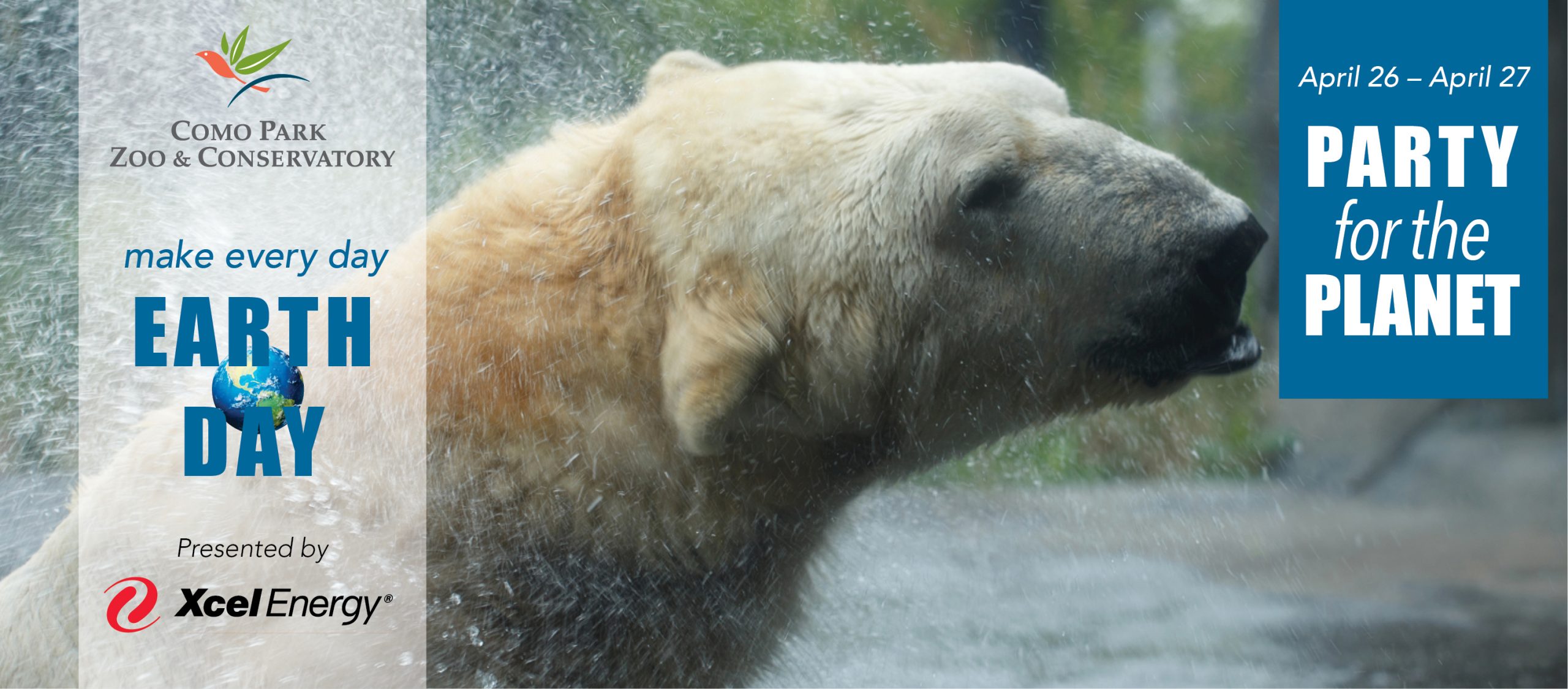As studbook keeper for polar bears, Allison Jungheim preserves the health and genetics of North America’s most majestic species
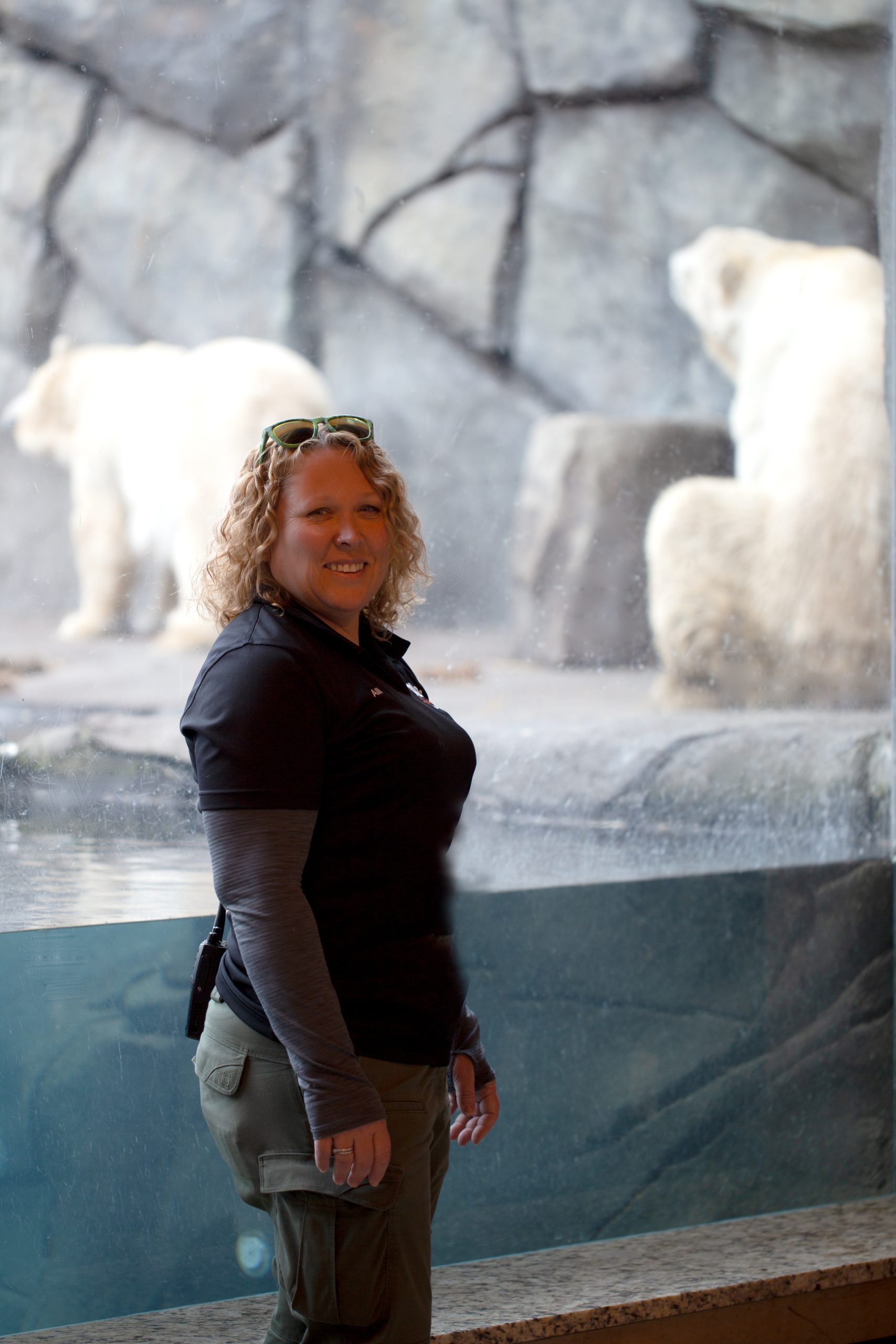
When she shares observations about the polar bears in her care, Senior Keeper Allison Jungheim can sound like she’s talking about her closest friends, bubbling about Nan’s bossy behavior, bragging about Kulu’s impressive weight gain (“At 940 pounds, we should probably stop calling him little Kulu”), and beaming at Neil, the mild-mannered male who first came to Como Zoo with his brother Buzz back in 2001. “He is my bear,” she says.
Jungheim brings the same enthusiasm to her role as studbook keeper for North America’s polar bears, responsible for tracking the genetic health and history of some 60 individuals living in partner zoos across Canada and the U.S. A project of the Bear Taxon Advisory Group through the Association of Zoos and Aquariums, the studbook is one of the ways that zoos work together to ensure that managed populations of polar bears are living their best lives.
Similar to your family’s own electronic medical records that allow for more coordinated health care, “keeping all of that data in one place is super important for the longevity of animals,” Jungheim says. “The studbook also gives me the ability to look back at historic animals and current animals, to see who’s related to whom, and who should breed with whom.”
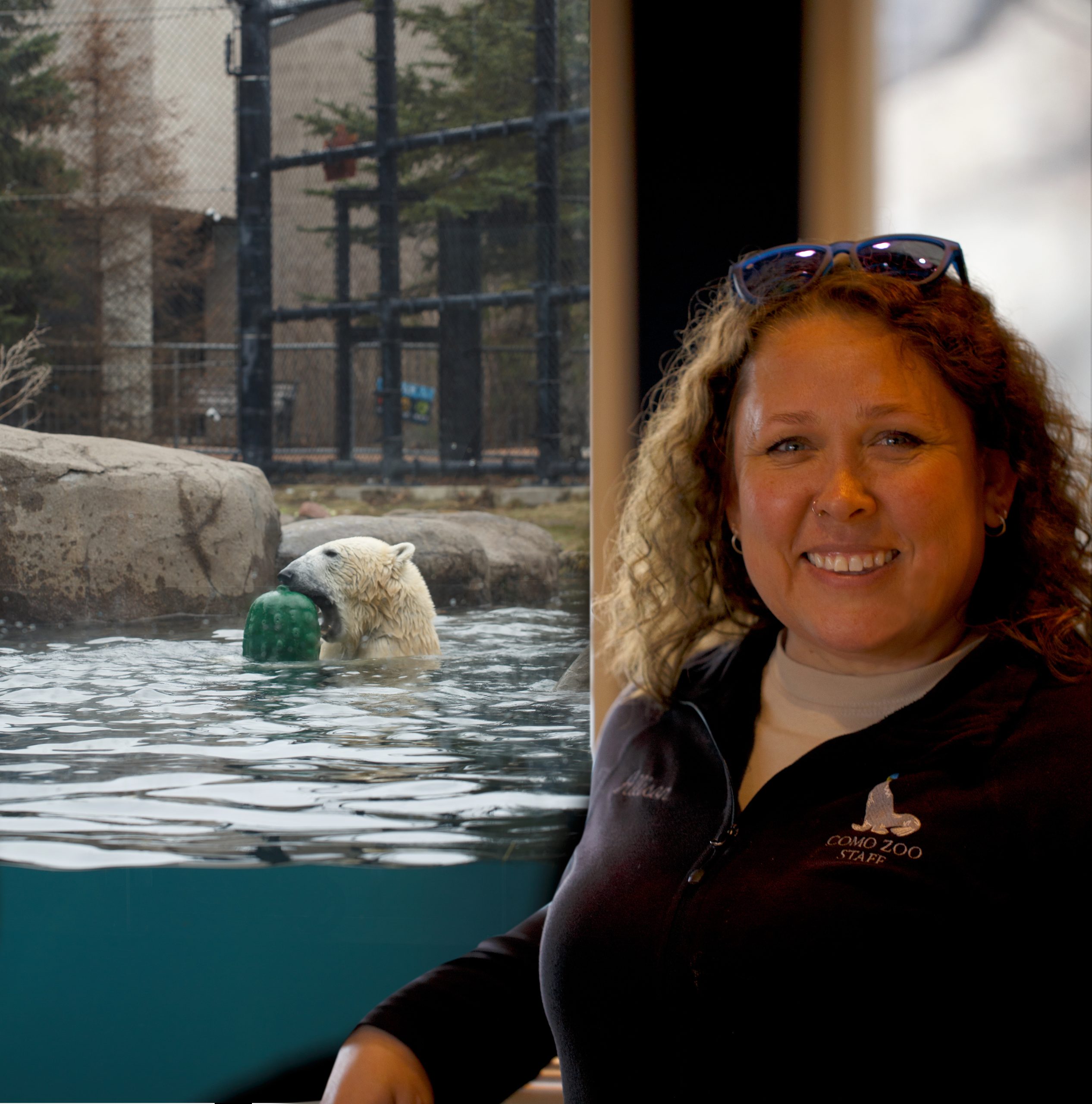
While Como Zoo’s keepers have earned national recognition for their success at reducing polar bear repetitive behaviors and developing tools for improving polar bear blood draws, Jungheim’s longtime leadership in polar bear preservation is a volunteer effort. “I don’t get any extra money or funding for managing the polar bear studbook, but it’s worth it to be part of the bigger picture, helping polar bears around the country, and not just here at Como.”
Polar bears require just the right conditions for successful breeding, both in zoos and in the wild. While polar bears will typically mate in early spring, they’re one of more than 130 animal species with delayed implantation, meaning that fertilized eggs don’t implant in the uterus until months later. The delay allows females to build up the fat reserves they’ll need to support themselves and their cubs during a long denning period. “But if the female doesn’t gain enough weight, or have good enough body condition, she may not implant that embryo or embryos at all,” explains Jungheim. The long dormancy period means that if one breeding pair is unsuccessful, zoos don’t have much time to establish a new pairing.
“That’s one reason why collaboration with other zoos is so important,” she says, noting that the polar bear community of keepers, managers, and veterinary staff have regular virtual meetings throughout the year, sharing breeding and denning news, and exploring new strategies. “One of the things we’re trying is to create more choice for mates by pairing more than just one male and one female,” she says. “Our thought is that by giving mate choice, it gives the male the chance to share the love with other females, and increases competition for breeding, and hopefully, increases success rates.”
With that strategy in mind, Como Zoo is getting ready to welcome a new female bear from a partner zoo, who might make a good breeding partner for Kulu. “With an aging population of bears, we’re trying to shake things up,” Jungheim says. If the pairing works, she may even have a couple of new names to add to the polar bear studbook.
Funding from Como Friends enabled Allison Jungheim to travel to attend an in-person polar bear conference, strengthening the network of connections zoos rely on to help bears live their best lives.

Celebrate Party for the Planet at Como on
April 26 and 27 | Presented by Xcel Energy
There’s no better place to celebrate Earth Day 2025 than Como Park Zoo & Conservatory, where our annual Party for the Planet is a two-day weekend celebration for visitors of all ages. Powered by our friends at Xcel Energy, this year’s Earth Day theme, “Our Power, Our Planet,” celebrates the movement toward renewable energy. With family-friendly activity stations, and splashy public programs like our Blaze Sparky Show, Party for the Planet is a great way to learn more about what you can do to protect our environment on Earth Day and every day.
